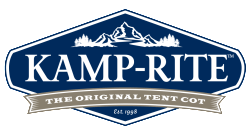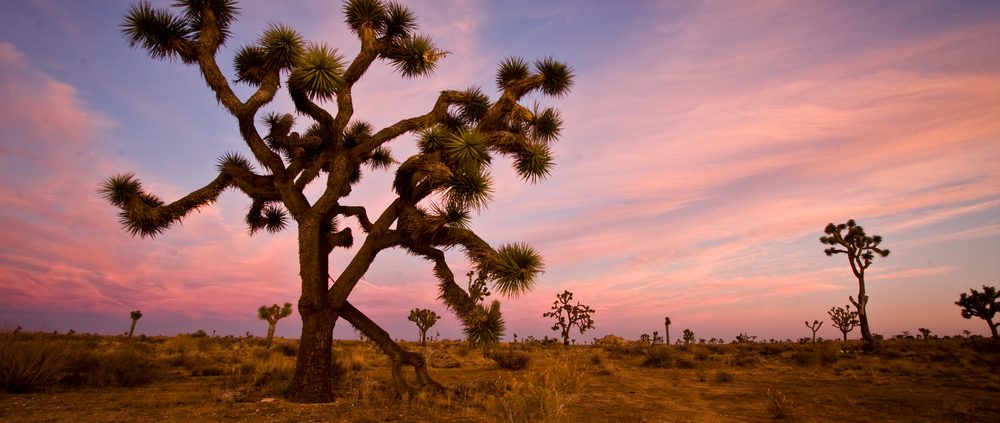Go Explore: Joshua Tree National Park
Where To Go
Located in southeastern California, Joshua Tree National Park covers an expanse of 792,510 acres—an area just slightly larger than the state of Rhode Island. Named after the Joshua trees that inhabit its terrain, Joshua Tree National Park hosts two distinct deserts systems—the Mojave and the Colorado—that divide California’s southernmost national park into two arid ecosystems of profoundly contrasting appearance caused by their varying elevations.
Thriving below 3,000 feet on the park’s gently declining eastern flank, is the Colorado, the western reach of the vast Sonoran Desert. The Colorado begins at Joshua Tree’s midsection and sweeps east across empty basins stubbled with creosote bushes. Compared to the loftier, wetter and more vegetated Mojave “high desert,” the Colorado “low desert” features higher temperatures and appears sparse and barren. “Gardens” of flowering ocotillo and cholla cactus decorate the length of the Colorado, which runs across the arid Pinto Basin into a parched wilderness of broken rock in the Eagle and Coxcomb Mountains.
If joining the park’s 1.4 million annual visitors for the first time, you’ll likely be surprised to see the abrupt transition between the Colorado and Mojave ecosystems. Situated above 3,000 feet, the Mojave section encompasses the park’s western half, which features some of the most intriguing and photogenic geological phenomena found in California’s various desert regions.
There, you’ll find giant, branching Joshua trees that thrive on sandy plains studded by massive granite monoliths and rock piles.
What To Explore
Your options at Joshua National Park as are vast the park itself and include exploring various backcountry roads, backpacking, birding, hiking, horseback riding, mountain biking, nature walks, photography, rock climbing, star gazing, wildflower viewing and a host of ranger tours and programs.
There are also historic remnants that date back to the beginning of Joshua Tree’s human history with the arrival of the Pinto people four to eight thousand years ago. Part of the Southwest’s earliest cultures, these hunter-gatherers lived in the Pinto Basin, which though inhospitably arid today, had a wet climate and was crossed by a slow river during that time period. When harvests of pinyon nuts, mesquite beans, acorns, and cactus fruit offered sustenance, nomadic groups of Native Americans would inhabit the region seasonally. You can still see bedrock—holes ground into solid rock and used to pulverize seeds during food preparation—left behind by these early inhabitants throughout the Wonderland of Rocks area south of the Indian Cove camping site.
At the turn of the 19th century, the park also experienced a flurry of gold-mining ventures, which includes the Lost Horse Mine and its tale of gun slinging cowboys, cattle rustlers, horse thieves, the lure of gold and a sticky-fingered miner.
Other places to tour and view include:
- Keys Ranch: the home and grounds of historical figure Bill Keys
- Barker Dam: an unlikely lake in the middle of a barren desert
- Ryan Mountain: a 1.4 mile trail that rises up to a summit of 5,461 ft. with stunning views of Wonderland of Rocks, Mount San Jacinto and the Pinto Basin
- Wall Street Mill: A well preserved mining site that features old cars and trucks scattered through the desert sand
Where To Stay
Joshua Tree National Park offers 9 campgrounds with around 500 campsites for groups of all sizes. The park also permits backcountry camping.
There are no bad campgrounds in Joshua Tree, but it helps to know your options. For example, only two campgrounds, Black Rock and Cottonwood, have water and flush toilets. The other sites only have pit toilets and you have to bring your own water. Most campsites have picnic tables and fire grates, but you have to provide your own firewood. We recommend visiting the National Park Service website for more information prior to making your trip.
Regardless of your campsite choice, you will experience a dazzling star show during clear nights and gorgeous sunsets and sunrises replete with a natural symphony of howling coyotes and singing birds.
How We Set Up Kamp
Since the amenities offered at each campsite in Joshua Tree vary from campground to campground, we came prepared for every possible site.
Some sites have a table and grill, while others don’t, so the Kwik Set Table With Benches and Kwik Pantry With Cook Table came in real handy at mealtimes.
At night, we slept like babies with the Double Tent Cot and a self-inflating mattress, which kept us off the rocky terrain and comfortable, while our Kitimat Mummy Sleeping Bag kept us warm and cozy all through the chilly desert night.
Our full campsite setup included:

